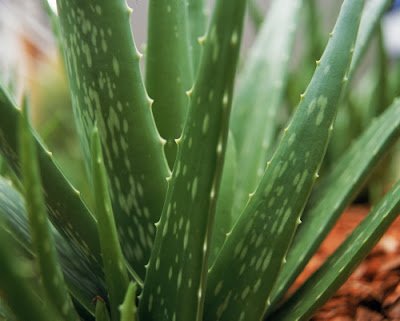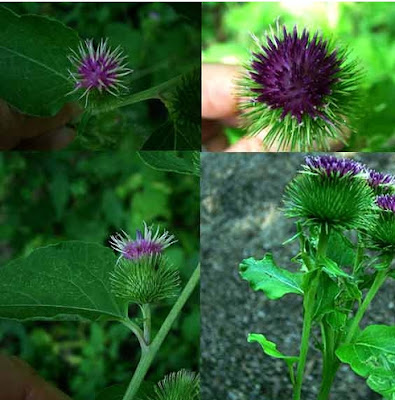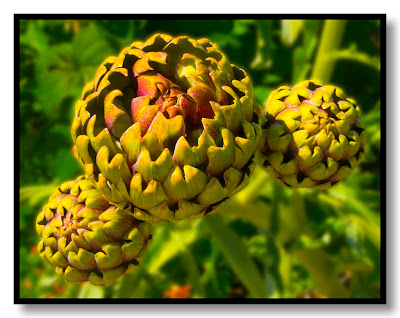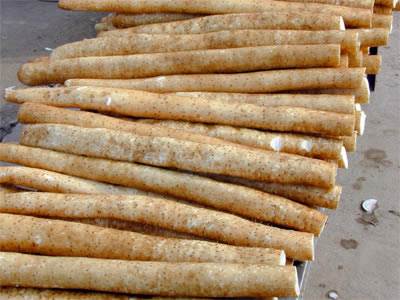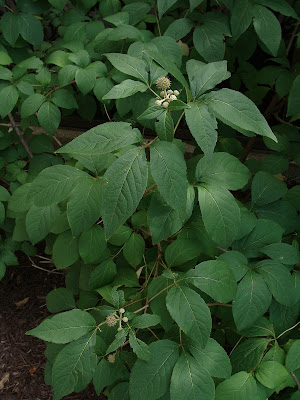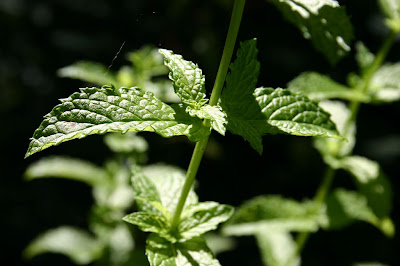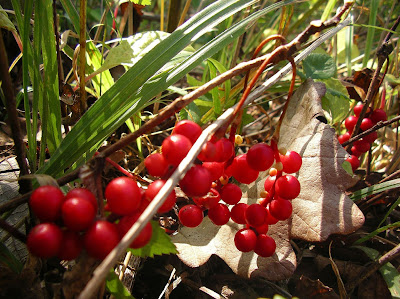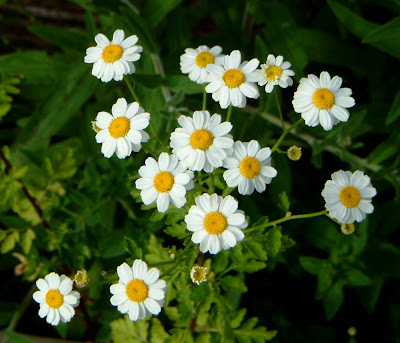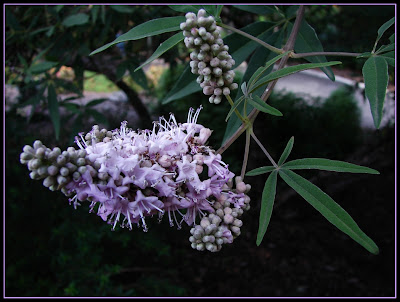1.
Make your own “Soft Scrub”: Create a paste of baking soda and water, then add a bit of salt to baking soda paste. Add a drop of
lemon essential oil, and scrub the counter tops and sinks until they shine. The salt won’t scratch surfaces since it’s gentle, and the lemon will make everything smell fresh.
2. Clean jewelry: Make your rings sparkle by scrubbing then with some baking soda on a wet toothbrush.
3. Take out fish smell: If you have fresh fish, baking soda helps to reduce the fish odor if you marinate the fish in it for an hour before cooking.
4. Soothe insect bites and bee stings: Create a paste with baking soda and water and pat over the affected area. It will create a cool relief and draw the sting out.
5. Clean combs and brushes: Soak combs and brushes in a hot water solution. 4 cups of hot water to a ½ cup baking soda. Soak for 1-2 hours then rinse clean.
6.
Smooth your skin: Create a soothing
bath salt recipe and use in a warm soaking bath to smooth your skin.
7. Clean up oil spills on your garage floor: Sprinkle baking soda over oil and absorb the liquid, then sweep it up. You can also sprinkle the baking soda in an oil pan and place where on floor where you car parks to catch and absorb the oils spills.
8. Create a fizzing toilet cleaner: (This is my new favorite boy bathroom smell solution!) Pour in 1 cup baking soda to toilet water, then 4-6 drops of Melaleuca (Tea Tree Oil) essential oil, then pour in 1 cup of vinegar. Watch it fizz and foam and clean your toilet. Swish with toilet bowl brush, for a sparkling and sanitized toilet.
9. Whiten your teeth: Use a little toothpaste, mix in one teaspoon baking soda, plus one teaspoon of hydrogen peroxide, and a 1/2 tsp. of water. Thoroughly mix then brush your teeth for two minutes. Repeat this once a week till you have desired results. Once your teeth are whitened, just repeat once a month.
10.
Mouthwash: To make your own mouth rinse; You will need 2 teaspoons baking soda, 1/4 teaspoon salt, and 2-3 drops of
peppermint essential oil. Add ingredients to a quart of boiling hot water and stir. Let cool and store in a glass jar with lid.
11.Homemade toothpaste: Dunk a wet toothbrush in baking soda to help whiten and freshen teeth. For a minty flavor. Make a paste of baking soda with a few drops of water and one drop of peppermint essential oil and stir together and brush away.
12.
Relieve indigestion: Combine 1/2 cup of water with 1/2 teaspoon of baking soda and 1 drop of
peppermint essential oil , and drink for indigestion.
13 No poo shampoo: Combine 1-2 tbsp of baking soda to 1 Cup of warm water. Pour over hair and rinse. ( You can make a vinegar/water rinse to use as a conditioner)
14. Relieve sunburn: To relieve pain, make a thin paste using water and baking soda. Gently apply to the burned area.
15. Clean your silver: Make a paste of 3 parts baking soda to one part water. Rub the paste onto each silver piece, then rinse with warm water and dry with a soft cloth.
16. Shine up your car: Use baking soda to clean up the vehicle like you do the bathroom, it makes chrome sparkle as well as stainless steel.
17. Clean cutting boards: Freshen and clean plastic and wooden cutting boards clean by scrubbing then with a paste made from 1 tbsp of each ;baking soda, salt, and water. After you are finished rinse with hot water.
18. Exfoliate Skin: To exfoliate your skin, make a paste using 3 parts baking soda to 1 part water. Apply to your face with your hands and rub gently to slough off dead skin, and leave your skin with a glow.
20. Soothe sore throat: Gargle with warm water and baking soda to heal and calm sore throats.
21. Detox: To relieve aches and pains, mix 1 cup baking soda and 1 cup apple cider vinegar in a warm tub of water.
22. Take out the gas from beans: Soak dry beans in soda water overnight to remove the gas from them.
23. Clean dentures and retainers: To clean, soak dentures and retainers in 1 cup warm water and 3 tablespoons baking soda.
24. Clean up burned pots and pans: Sprinkle bottom of burned pan. Add one inch of water and bring to a boil. It will remove the burned on junk fast.
25. Remove scuff marks: To remove scuff marks or grease spills from the floor, sprinkle with baking soda and then wipe with a warm, damp cloth. This is even safe for no-wax floors.
26. Make a volcano with the kids: Vinegar and baking soda of course make a fun explosion for the kids!
27. Keeps iced tea clear: Add a pinch of baking soda to iced tea to keep it clear and from being bitter. (Just a small amount is all it takes.)
28. Soothe itchy rashes: Add baking soda to a warn bath and soak to relieve itchy rashes and dry skin.
29. Relieve heartburn: to relieve heartburn, drink 4 ounces of water mixed with 1 teaspoon baking soda.
30. Keep garbage cans fresh: Baking soda will keep away garbage odors; sprinkle the bottom of your garbage can, and also sprinkle the inside of the bag once you have lined the garbage can.
31. Fluff up your scrambled eggs: To make fluffier scrambled eggs , add ½ teaspoon of baking soda to three eggs.
32.Clean your stove top: Mix up a paste using baking soda and water. Apply the mixture to your glass stove top. Rub and then wipe clean.
33. Clean up cast iron skillets: To remove baked on food residue, boil a mixture of 1 cup of water and 2 tablespoons of baking soda in the cookware. Then re-season pan.
34.
Deodorize refrigerator: Place open box of baking soda in your refrigerator. Want a new twist on this old classic? - try also adding a few drops of
lemon essential oil, for even more freshness.
35. Remove odors from cutting board: Sprinkle baking soda on cutting board and rub with half of a lemon to remove smells from your board and freshen it up.
36. Deodorize food storage containers: To remove odors from food containers, sprinkle with baking soda and allow them to sit covered for 24-48 hours. Or you can wash them in a sink of water mixed with ½ cup baking soda.
37.. Put out small fires. Grab handfuls of baking soda to extinguish small grease fires in the kitchen.
38. Deodorize drains: Freshen up sink drains and garbage disposals, by adding a tablespoon of baking soda and running hot water for a few minutes.
39. Reduce acid in tomatoes: To reduce acid in tomatoes, sprinkle them with a pinch of baking soda.
40. Freshen stinky clothes: Simply add a 1/2 Cup of baking soda to the load of laundry to remove odors.
41. Scrub dirty tennis shoes: Baking soda makes a great shoe scrub. Sprinkle shoes with baking soda, and use a dampened brush to clean sneakers.
42. Tenderize meat: To tenderize, rub meat with baking soda and allow it to sit for 2-3 hours in the refrigerator. Rinse before cooking.
43. Remove chicken feathers: To easily remove feathers and clean, boil the chicken in a pot of water mixed with 1 teaspoon baking soda.
45. Antiperspirant: Apply baking soda under arms for quick-dry antiperspirant.
46. Clean and deodorize the fridge: To clean and deodorize the refrigerator, make a cleaning solution using 4 cups water and ¼ cup baking soda. Wipe down the inside of all racks and drawers to make your fridge clean and fresh.
47. Unclog drains: To unclog drains, remove as much of the standing water as possible. Pour 1 cup baking soda into the drain then pour 1 cup hot vinegar. Allow it to fizz, foam and sit for 10-15 minutes and then run hot water for a few minutes.
48. Clean coffee maker: To clean your coffee maker, add ¼ cup baking soda to a pot of water. Run the water through a complete brewing cycle.
49.Reduce odors in cat litter: After removing cat feces, sprinkle baking soda on cat litter to help freshen it up.
50. Odor eaters for smelly shoes. Sprinkle inside of stinky shoes with baking soda Add a drop of melaleuca essential oil if you like, and let sit overnight.
51. Dry scrub for bathroom and kitchen faucets. (this takes the place of Comet) Sprinkle baking soda in dry form and scour (brush) in places you would use a powder type of cleanser, such as porcelain sinks, bathroom tile, and around faucets.
52. Fruit and vegetable wash: Clean pesticides off of fruits and vegetables. Add some baking soda to a sink of water and rinse your produce in it.
53. Washing machine cleaner: Baking soda can work to get rid of stains on your clothes, but it can also be used to rid your machine of sticky, stubborn, and smelly stains. (Great for the rubber on front loading washers)
54. Fabric softener: Add 1/2 cup of baking soda to the rinse cycle of your laundry’s load for softer clothes.
55. Clean up your outdoor grill: Sprinkle with baking soda and scrub with wire brush to remove baked on charred residue.
56. Freshen and whiten cloth diapers: Pre-soak your baby’s diapers in baking soda and water solution overnight.
57. Rose Bush Spray: Roses really do well if you spray a mixture of a gallon of water to one teaspoon of baking soda. Put mixture in a spray bottle and mist rose leaves. (And you can even add a 1-2 tsp of liquid soap to clean the leaves.)
58. Remove fungus and mold from plants: Baking soda is useful in the garden as an anti-fungal, helping to get rid of fungus, mold, and mildew onto affected leaves. ( make up a solution as in #57, and use on other plants as well)
59. Soothe baby’s bottom rash: Add 2 tablespoons of baking soda, to a lukewarm bath, and have baby sit in it for a few minutes to soothe diaper rash.
60. Make your own “Carpet Fresh” deodorizer:
- 1 16 oz box of baking soda
- 20 drops of lavender essential oil
- 10 drops of lemon essential oil
- whisk together in a bowl. store in a air tight container, such as a glass mason jar.
- Sprinkle carper deodorizer and let it sit for 20 minutes or so. Vacuum up.



